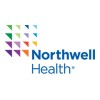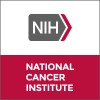
A Phase I Trial Using Cyclophosphamide, Rituximab and Revlimid (CR2) for the Treatment of Relapsed/Refractory...
LeukemiaLymphocytic5 moreThe purpose of this study is to determine the maximum tolerated dose (MTD), safety and toxicity when cyclophosphamide, rituximab and lenalidomide (Revlimid) are combined for the treatment of relapsed/refractory of chronic lymphocytic leukemia (CLL) and small lymphocytic lymphoma (SLL).

Rituximab in Preventing Acute Graft-Versus-Host Disease in a Donor Stem Cell Transplant for Hematologic...
Accelerated Phase Chronic Myelogenous LeukemiaAdult Acute Lymphoblastic Leukemia in Remission109 moreThis phase II trial is studying how well rituximab works in preventing acute graft-versus-host disease (GVHD) in patients undergoing a donor stem cell transplant for hematologic cancer. Giving chemotherapy and total-body irradiation before a donor stem cell transplant helps stop the growth of cancer cells. It may also stop the patient's immune system from rejecting the donor's stem cells. The donated stem cells may replace the patient's immune cells and help destroy any remaining cancer cells (graft-versus-tumor effect). Sometimes the transplanted cells from a donor can also make an immune response against the body's normal cells. Giving a monoclonal antibody, rituximab, together with anti-thymocyte globulin, tacrolimus, and mycophenolate mofetil before and after the transplant may stop this from happening

Study of Noscapine for Patients With Low Grade Non Hodgkin's Lymphoma or Chronic Lymphocytic Leukemia...
Non-Hodgkin's LymphomaChronic Lymphocytic LeukemiaThis study is for patients with non-hodgkin's lymphoma or chronic lymphocytic leukemia, which has failed to shrink or has returned after previous treatment with chemotherapy. The purpose of this study is to find out whether patients with these types of cancer will have their tumor shrunk after treatment with a drug called Noscapine. The second purpose is to see what are the side effects of this drug. This drug is being used as an over-the-counter cough suppressor in Europe and Japan, but has also shown to be effective against cancer.

Reduced Intensity Preparative Regimen Followed by Stem Cell Transplant (FAB)
Myelodysplastic and Myeloproliferative DisordersAcute Myelogenous Leukemia6 moreBlood disorders such as leukemia or lymphoma or hemoglobinopathies can benefit from receiving an allogeneic (meaning that the cells are from a donor) stem cell transplant. Stem cells are created in the bone marrow. They grow into different types of blood cells that the body needs, including red blood cells, white blood cells, and platelets. In a transplant, the body's stem cells would be killed and then replaced by stem cells from the donor. Usually, patients are given very high doses of chemotherapy (drugs which kill cancer cells) prior to receiving a stem cell transplant. However, patients that are older, have received several prior treatments, or have other organ diseases are at a high risk of getting life-threatening treatment-related side effects from high doses of chemotherapy. Over the past several years, some doctors have begun to use lower doses of chemotherapy for preparing patients for a stem cell transplant. A condition that can occur after a stem cell transplant from a donor is Graft Versus Host Disease (GVHD). It is a rare but serious disorder that can strike persons whose immune system is suppressed and have received either a blood transfusion or a bone marrow transplant. Symptoms may include skin rash, intestinal problems similar to inflammation of the bowel and liver dysfunction. This research study uses a combination of lower-dose chemotherapy agents that is slightly different from those that have been used before. The medicines that will be used in this study are Fludarabine, Busulfan, both chemotherapy medicines, and Campath. Campath is a monoclonal antibody (a type of substance produced in the laboratory that binds to cancer cells). It helps the immune system see the cancer cell as something that needs to be destroyed. This research study will help us learn if using Fludarabine, Busulfan and Campath prior to an allogeneic stem cell transplant can provide treatment for blood disorders while decreasing the incidence of side effects.

ABT-751 With Chemotherapy for Relapsed Pediatric ALL
Recurrent Pediatric ALLRelapsed Pediatric ALL2 moreThis is a phase I/II study of an investigational drug called ABT-751, produced by Abbott Laboratories, given in combination with chemotherapy drugs used to treat acute lymphoblastic leukemia (ALL) that has come back (recurred). The phase I portion of this study is being done to find the highest dose of ABT-751 that can be given safely in combination with other chemotherapy drugs. A safe dose is one that does not result in unacceptable side effects. After a safe dose for ABT-751 given with chemotherapy has been found, the study will add additional patients to find out if ABT-751 (given at the maximal safe dose) when given with additional chemotherapy is an effective therapy for the treatment of children with relapsed ALL. It is expected that approximately 15-35 children and young adults will take part in this study.

Iodine I 131 Monoclonal Antibody BC8, Fludarabine Phosphate, Cyclophosphamide, Total-Body Irradiation...
Acute Myeloid Leukemia Arising From Previous Myelodysplastic SyndromeAdult Acute Lymphoblastic Leukemia in Remission8 moreThis phase I trial studies the side effects and best dose of iodine I 131monoclonal antibody BC8 when given together with fludarabine phosphate, cyclophosphamide, total-body irradiation, and donor bone marrow transplant, and to see how well they work in treating patients with acute myeloid leukemia or acute lymphoblastic leukemia that has spread to nearby or other places in the body (advanced), or high-risk myelodysplastic syndrome. Giving chemotherapy drugs, such as fludarabine phosphate and cyclophosphamide, and total-body irradiation before a donor bone marrow transplant helps stop the growth of cancer or abnormal cells and helps stop the patient's immune system from rejecting the donor's stem cells. Also, radiolabeled monoclonal antibodies, such as iodine I 131 monoclonal antibody BC8, can find cancer cells and carry cancer-killing substances to them without harming normal cells. When the healthy stem cells from a donor are infused into the patient they may help the patient's bone marrow make stem cells, red blood cells, white blood cells, and platelets. Sometimes the transplanted cells from a donor can make an immune response against the body's normal cells. Giving cyclophosphamide together with mycophenolate mofetil and tacrolimus after the transplant may stop this from happening. Giving a radiolabeled monoclonal antibody together with donor stem cell transplant, fludarabine phosphate, cyclophosphamide, mycophenolate mofetil, and tacrolimus may be an effective treatment for advanced acute myeloid leukemia, acute lymphoblastic leukemia, or myelodysplastic syndromes.

Campath Maintenance in Chronic Lymphocytic Leukemia
Chronic Lymphocytic LeukemiaThis is a study designed to test whether giving campath (also known as alemtuzumab) on a maintenance schedule will prolong the time until the patient requires chemotherapy.

Obatoclax, Fludarabine, and Rituximab in Treating Patients With Previously Treated Chronic Lymphocytic...
B-cell Chronic Lymphocytic LeukemiaLeukemia6 moreObatoclax may stop the growth of chronic lymphocytic leukemia by blocking blood flow to the cancer and by blocking some of the enzymes needed for cell growth. Drugs used in chemotherapy, such as fludarabine, work in different ways to stop the growth of cancer cells, either by killing the cells or by stopping them from dividing. Monoclonal antibodies, such as rituximab, can block cancer growth in different ways. Some block the ability of cancer cells to grow and spread. Others find cancer cells and help kill them or carry cancer-killing substances to them. Giving obatoclax together with fludarabine and rituximab may kill more cancer cells. This phase I trial is studying the side effects and best dose of obatoclax when given together with fludarabine and rituximab in treating patients with B-cell chronic lymphocytic leukemia.

Phase 1, Dose-Escalation, Pharmacodynamic Study of IV CNF1010 in ZAP-70 Positive CLL
Chronic Lymphocytic LeukemiaThe purpose of the study is to evaluate the effects of increasing doses of CNF1010 on pharmacodynamic markers and hematological response.

Treatment of Childhood Acute Lymphoblastic Leukemia
Acute Lymphoblastic LeukemiaThe purpose of this study is to reduce the side-effects and discomfort of anti-leukemia therapy, to attain long-term control of the disease and to hopefully eradicate it.
